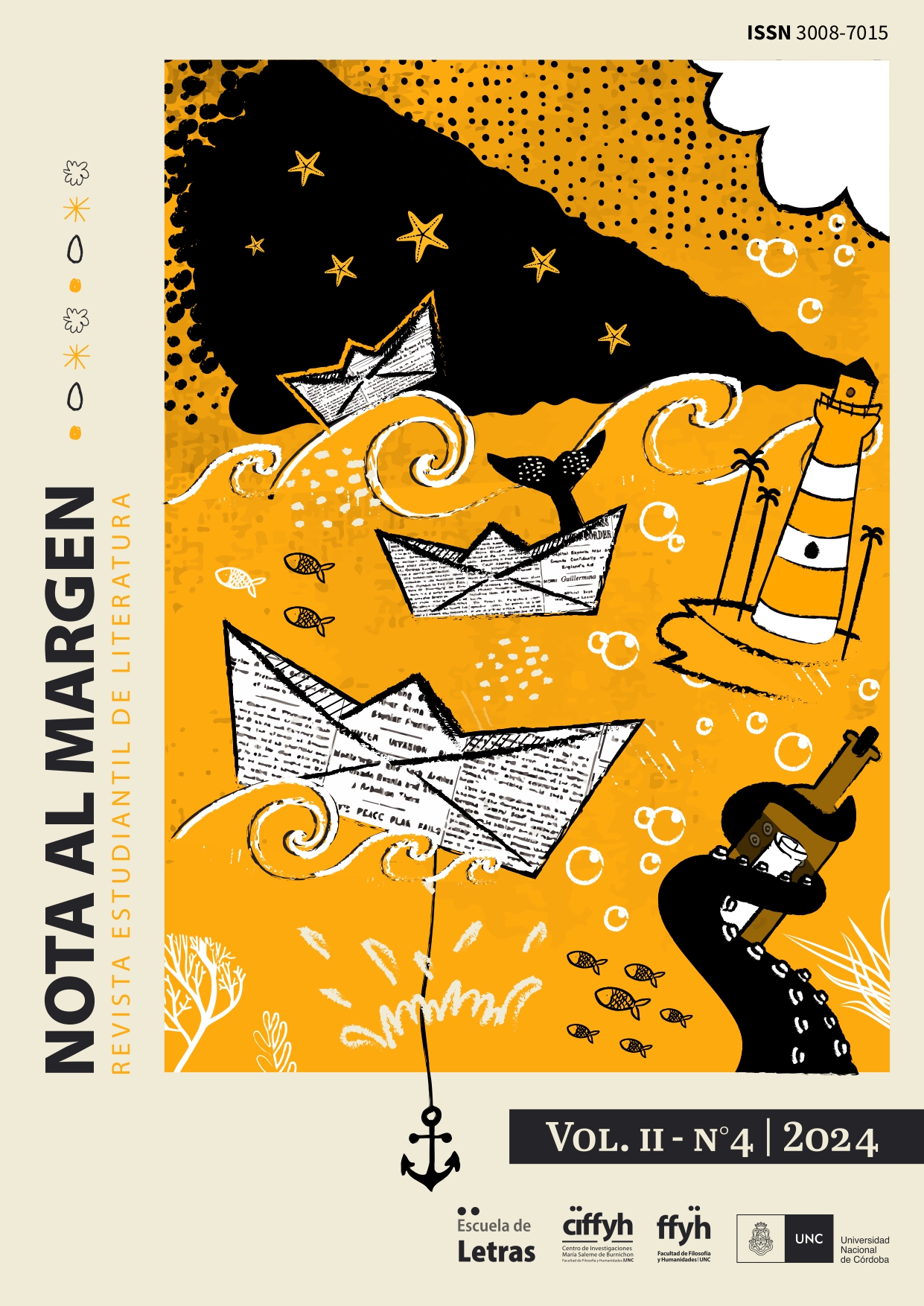The Epigraphs of Operación Masacre: Rodolfo Walsh and the Soft Quiet Seasons
Keywords:
contemporary literature, Argentina, canon, archive, literature and reality, non-fiction, autonomyAbstract
While he was alive, Rodolfo Walsh tried to keep Operación masacre open to reality, modifying the paratextual apparatus in each edition to inscribe the text within the political context. Today, the archival work of criticism is necessary to prevent the book, monumentalized by the canon, from losing its ability to “act”. The following article shares this objective with works by Crespo, Hernaiz, Link and Luppi, and aims to achieve it by studying a paratextual element that is not present in current editions: the epigraph that Walsh removed in 1969. Pulling on this thread will allow us, through the tracing of a “physical-subjective path”, to access a new reading of the paratextual apparatus of Operación masacre, analyze its protagonist in a different way and understand better the relationship between literature and reality in Walsh’s writing.
References
Amar Sánchez, A. M. (1986). La propuesta de una escritura (en homenaje a Rodolfo Walsh). Revista Iberoamericana, 52, 135-136, 431-445. https://ahira.com.ar/ejemplares/crisis-3a-epoca-no-55/
Borges, J. L. (1923). Fervor de Buenos Aires.
Borges, J. L. (2016). Obras completas 1. Sudamericana.
Crespo, B. (1994). Operación masacre: el relato que sigue. Filología, año XXVII, (1-2). Instituto de Filología y Literaturas Hispánicas Dr. Amado Alonso, FFyL, UBA.
Hernaiz, S. (2015). Borges y sus editores: itinerarios de Fervor de Buenos Aires (1923-1977). Orbis Tertius, 20 (22), 10-20. https://memoria.fahce.unlp.edu.ar/art_revistas/pr.7091/pr.7091.pdf
Hernaiz, S. (2012). Rodolfo Walsh no escribió Operación masacre y otros ensayos. 17grises editora.
Genette, G. (2001). Umbrales (Trad. de Susana Lage). Siglo XXI.
Jozami, E. (2006). Rodolfo Walsh. La palabra y la acción. Norma.
Link, D. (2003). Rodolfo Walsh y la crisis de la literatura. Cómo se lee y otras intervenciones críticas (pp. 271-292). Norma.
Link, D. (2009). Qué se yo. Testimonio, experiencia y subjetividad. En: Vallina, Cecilia (ed.). Crítica del testimonio. Ensayos sobre las relaciones entre memoria y relato. Rosario, Beatriz Viterbo, pp. 118-131. Recuperado de: https://www.researchgate.net/publication/283721188_Daniel_Link_Que_se_yo_Testimonio_experiencia_y_subjetividad
Link, D. (2019). Canon contra archivo. Lenguas Vivas. Revista del Instituto de Enseñanza Superior en Lenguas Vivas ‘Juan Ramón Fernández’, (15), 10-25. https://ieslvf-caba.infd.edu.ar/sitio/wp-content/uploads/2019/12/Lenguas-Vivas_15_digital.pdf
Luppi, J. P. (2015). Rodolfo Walsh entre el monumento y el futuro. Zama, 7, 2015, 113-129. http://revistascientificas.filo.uba.ar/index.php/zama/article/view/2191/1922
Piglia, R. Entrevista a Rodolfo Walsh: he sido traído y llevado por los tiempos. Crisis, (55), 16-21.
Piglia, R. (2015). Los diarios de Emilio Renzi. Años de formación. Anagrama.
Verbitsky, H. (1984). El Facundo de Walsh. El periodista de Buenos Aires, (2).
Walsh, R. (1996). Ese hombre y otros papeles personales. Ed. Daniel Link. Seix Barral.
Walsh, R. (2013). Operación masacre. Ediciones de la Flor.
Published
Issue
Section
License
Copyright (c) 2024 Rodrigo Arenas

This work is licensed under a Creative Commons Attribution-NonCommercial 4.0 International License.
Usted es libre de:
Compartir — copiar y redistribuir el material en cualquier medio o formato.
Adaptar — remezclar, transformar y contruir a partir del material.
La licenciante no puede revocar estas libertades en tanto usted siga los términos de licencia
Bajo los siguientes términos:
Atribución — Usted debe dar crédito de manera adecuada,
brindar un enlace a la licencia, e indicar si se han realizado cambios.
NoComercial — Usted no puede hacer uso
del material con propósitos comerciales.












